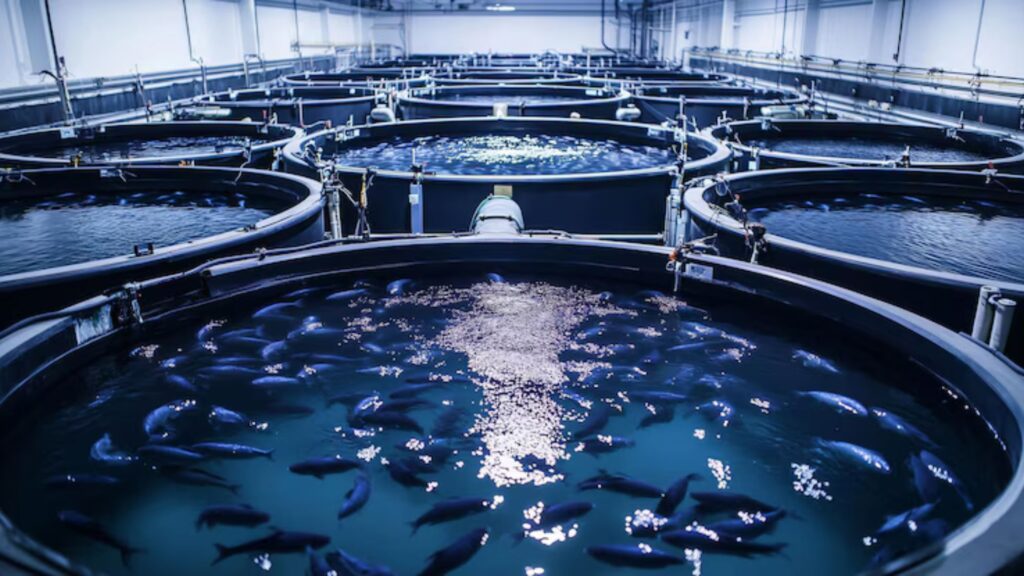Why Are Fish Passage Systems Essential for Today’s Waterways?

Dams, culverts, and other barriers have long been a double-edged sword for communities and businesses. While they bring hydropower, irrigation, and flood control, they also fragment rivers, block migratory routes, and threaten fish populations.
According to the U.S. Fish & Wildlife Service, millions of barriers across the country have contributed to species declines and even extinctions. The economic, ecological, and cultural stakes are high. As business leaders and decision-makers look for ways to balance infrastructure with environmental responsibility, the spotlight is now on innovative fish passage systems that restore connectivity and resilience to our waterways.
What Makes Modern Fish Passage Systems Different?
For decades, fish ladders and lifts were the go-to solutions. While effective for some species, these traditional systems often fall short for weaker swimmers, smaller fish, or sites with variable flows. Today’s fish passage systems are more adaptive, data-driven, and scalable. According to the Pacific Northwest National Laboratory, advances in sensor and receiver technology now allow for real-time monitoring of fish movement and environmental conditions, supporting smarter planning and rapid response to climate change impacts.
Modular, portable systems like Whooshh Innovations’ Passage Portal™ can be deployed in remote locations without roads or power, helping thousands of salmon bypass barriers in a matter of months.
How Do Fish Passage Systems Support Economic and Ecological Goals?
Restoring fish passage isn’t just about saving wildlife. It’s about unlocking new economic opportunities and building climate resilience. Improved fish passage supports commercial and recreational fisheries, boosts tourism, and reduces long-term infrastructure costs. The Bipartisan Infrastructure Law allocated $200 million for fish passage restoration, recognizing its role in reconnecting habitats, increasing flood resilience, and saving money on future repairs. In the Pacific Northwest, innovative systems have helped boost downstream migration to nearly a million juvenile fish per year, while hydropower plants continue to generate clean energy.
What Are the Key Technologies and Approaches?
Modern fish passage systems use a mix of physical and behavioral tools. Fish ladders, lifts, and juvenile bypass systems remain important, but new solutions like the Whooshh Passage Portal™ are changing the game. This system uses artificial intelligence to scan and sort fish, then gently propels them through a tube over the dam, reducing stress and injury. Unlike traditional ladders, it uses minimal water-allowing more flow for irrigation or hydropower-and can move fish in just ten seconds, compared to hours or days for other methods. The modular design means it can be installed quickly, even in remote or challenging locations.
How Does the Fish Passage Portal Redefine the Standard?
The Whooshh Passage Portal™ stands out for its simplicity and effectiveness. Fish swim voluntarily into the system, where they are scanned and sorted using AI technology. Only target species are transported, while invasive or hatchery fish can be diverted. The system’s soft tubes provide a gentle, low-stress ride, minimizing fatigue and predation risk. In the Big Bar project in Canada, two Passage Portals helped thousands of salmon reach their spawning habitat in less than three months-outperforming traditional “trap and haul” methods and earning industry recognition for environmental stewardship.
As Mike Messina of Whooshh Innovations notes, “Where we have seen so many other fields benefit from clever design and technological innovation, when it comes to fish passage the technology has remained the same for 60 years.”
Are Fish Passage Systems the Future of River Connectivity?
The momentum is clear: as climate change, regulatory pressure, and public scrutiny intensify, businesses and agencies are embracing smarter, more adaptive fish passage solutions. The U.S. Fish & Wildlife Service’s Federal Interagency Fish Passage Portal now serves as a one-stop resource for funding, technical support, and best practices. With modular, AI-driven systems like the Whooshh Passage Portal™, the industry is moving toward solutions that are faster to deploy, easier to maintain, and better for both fish and people.
The Bottom Line: Building Resilient Waterways for the Next Generation
Fish passage systems are no longer a niche concern-they’re a linchpin for sustainable river management, economic growth, and community resilience. By investing in advanced, data-driven solutions, decision-makers can future-proof operations, meet regulatory requirements, and restore the natural rhythms of our waterways. The next chapter in river management will be written by those who prioritize connectivity, innovation, and adaptability. The fish-and the communities that depend on them-are counting on it.
